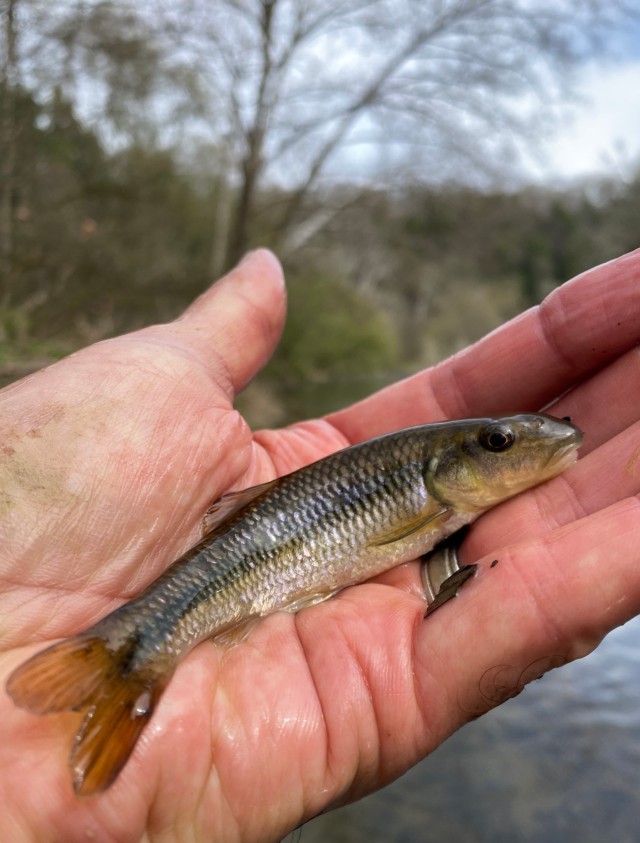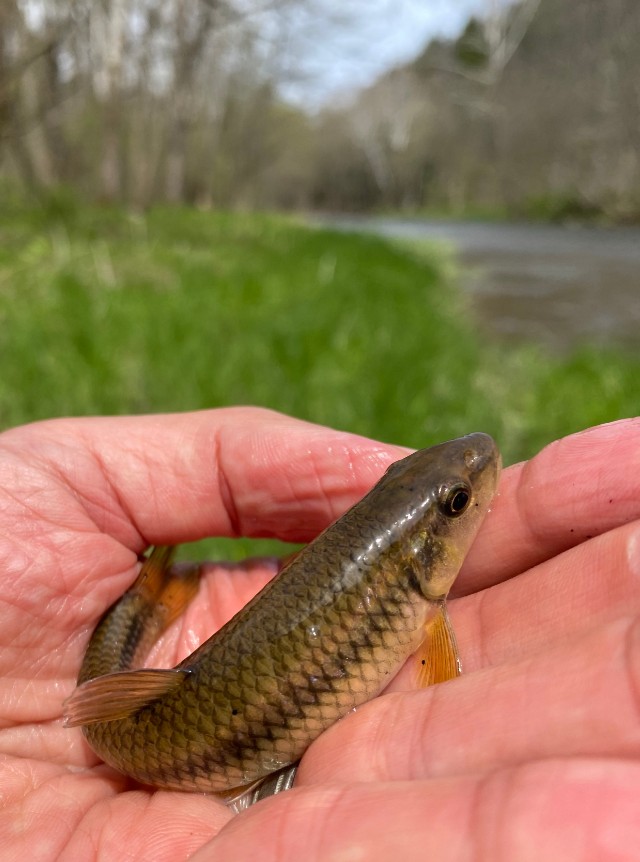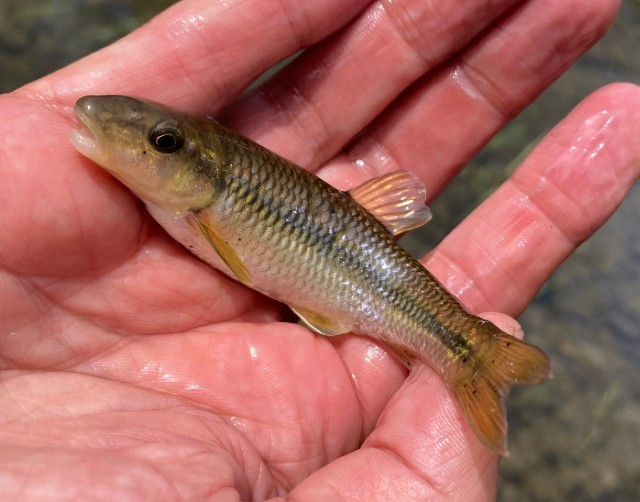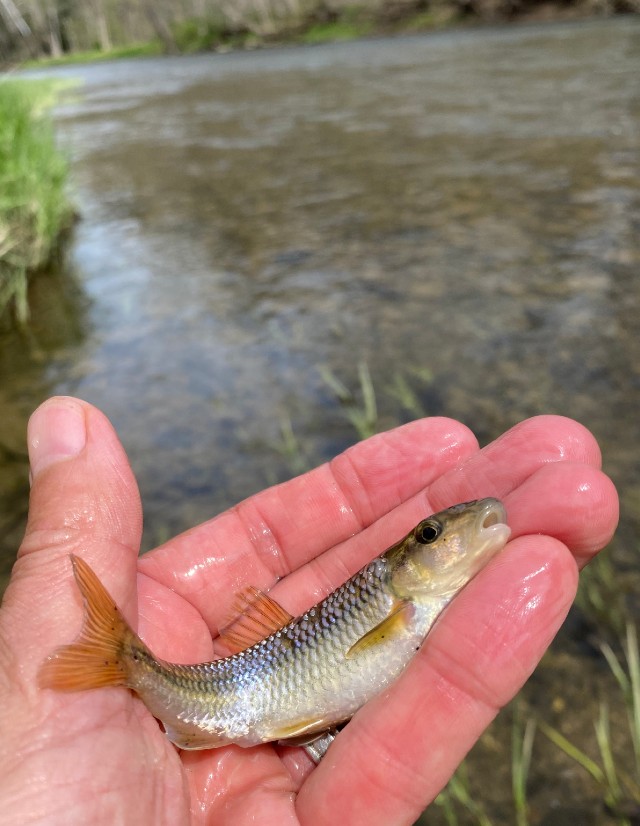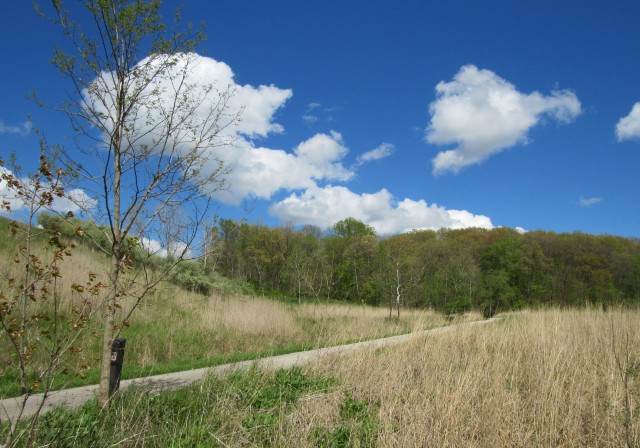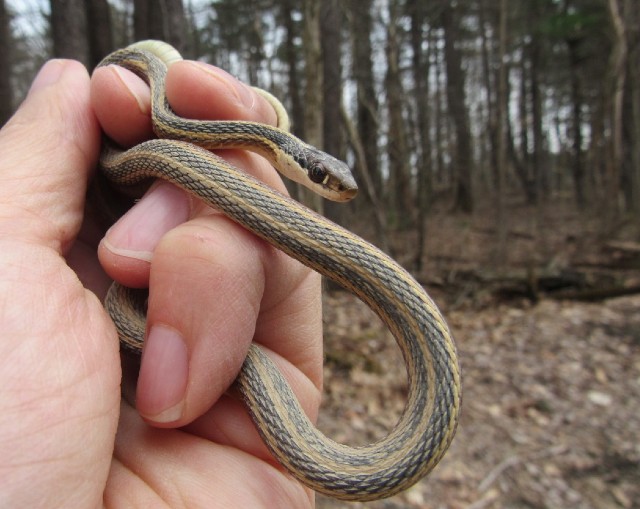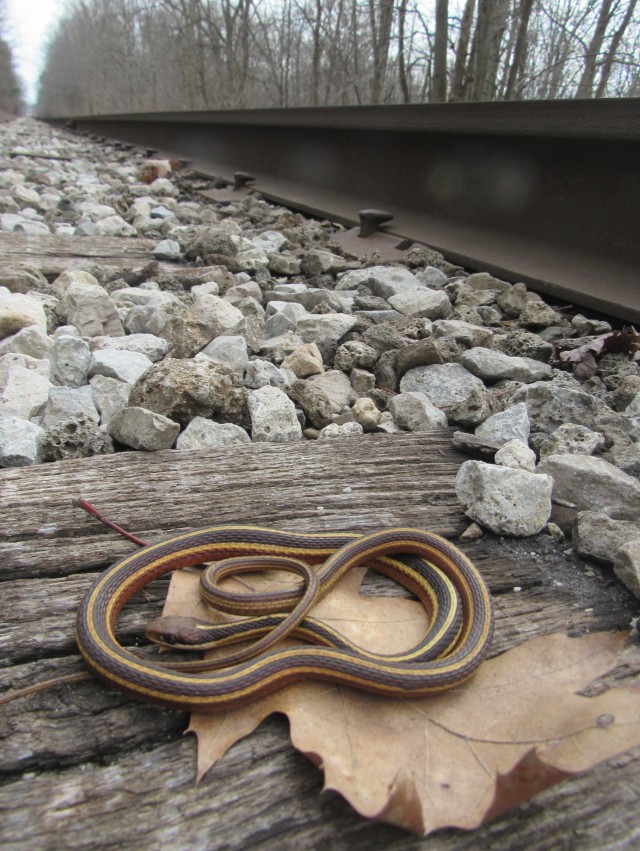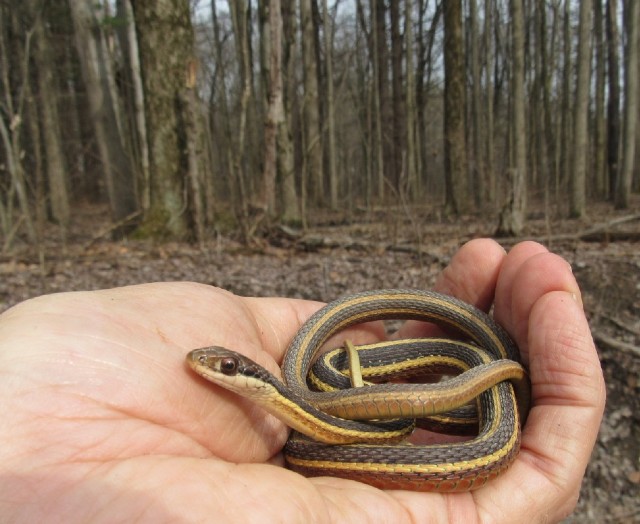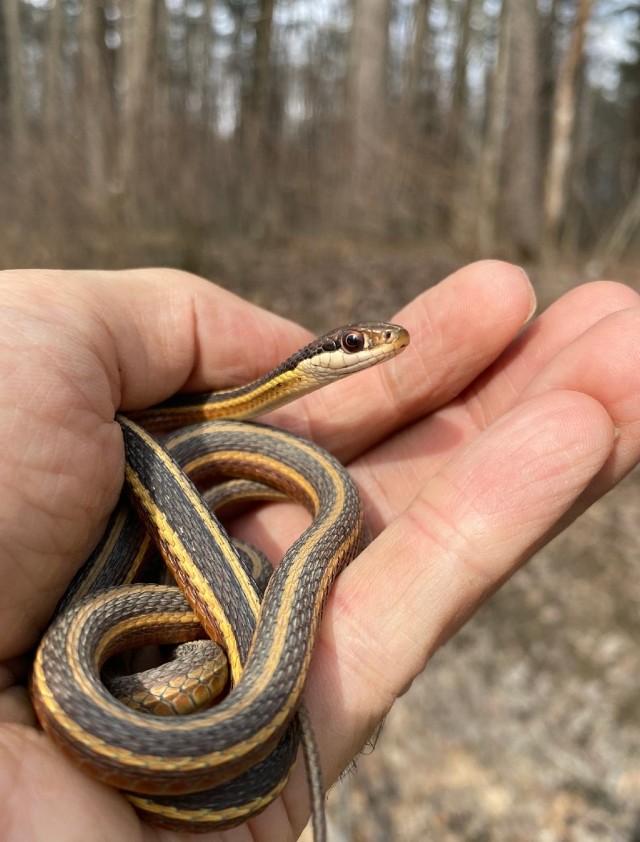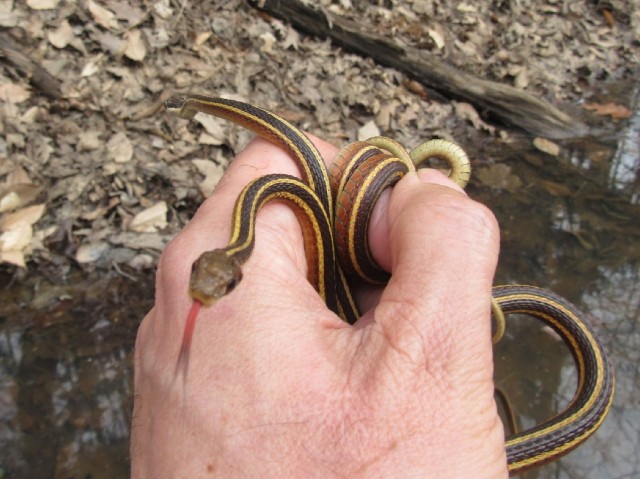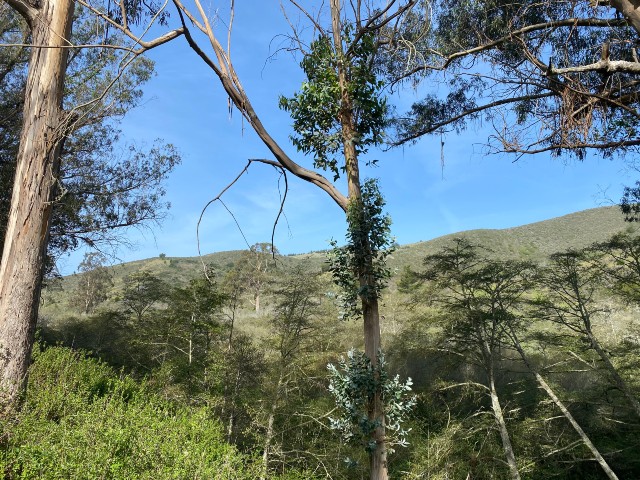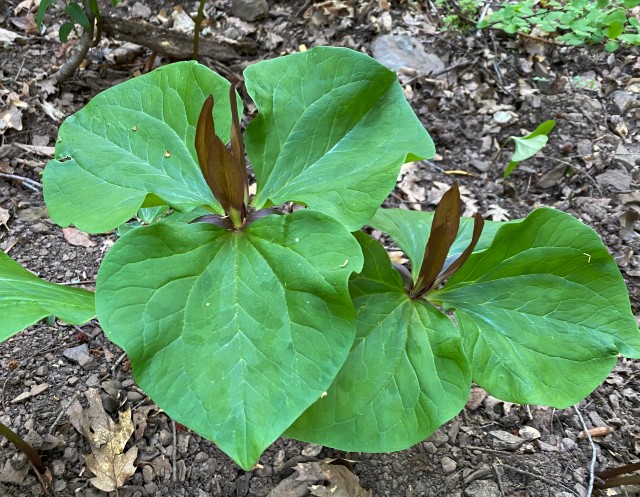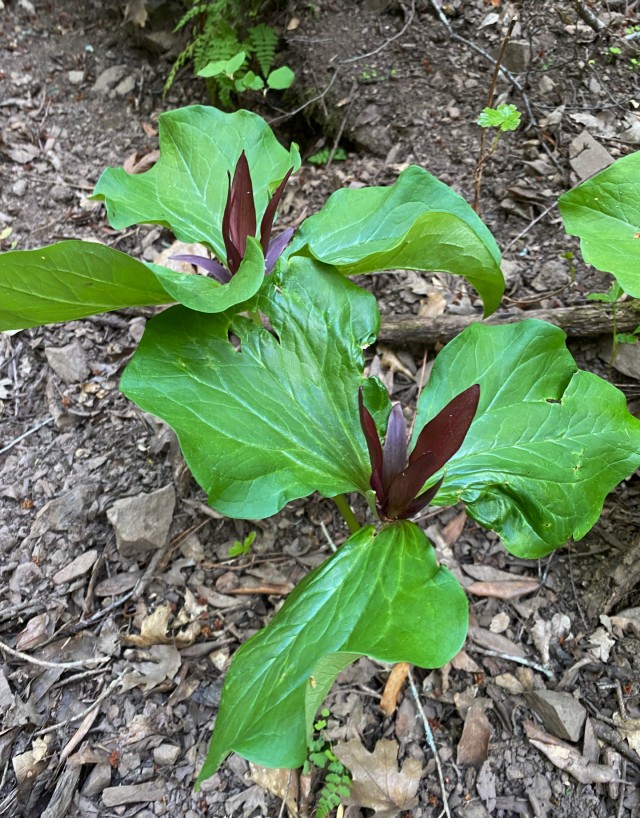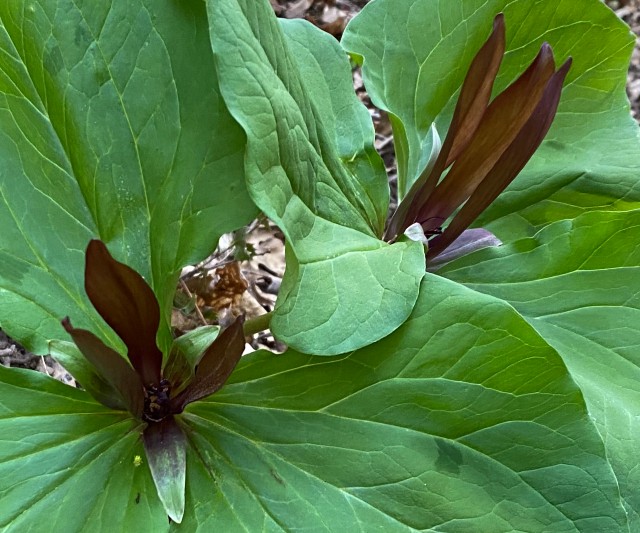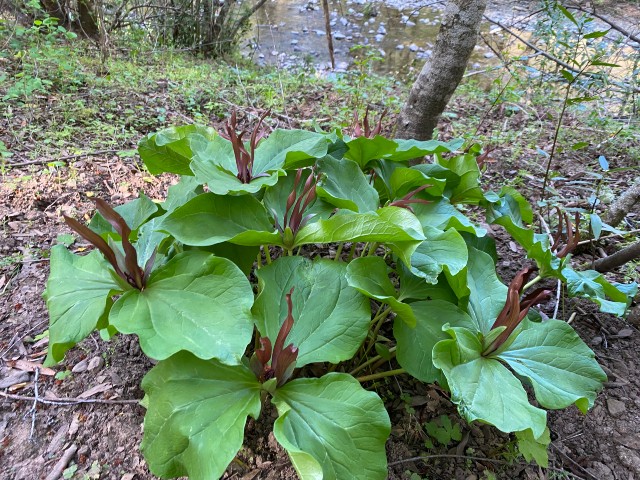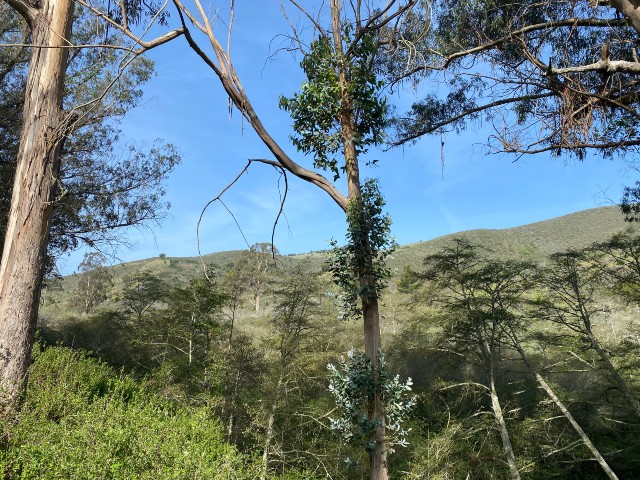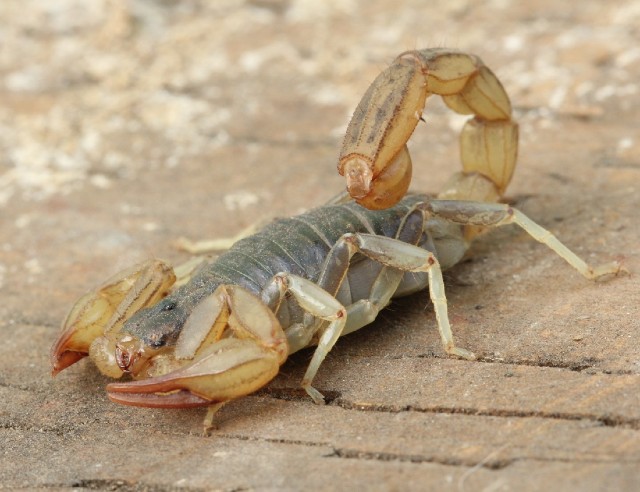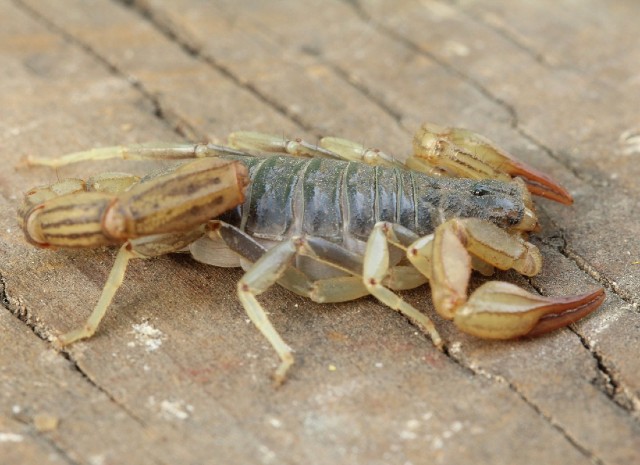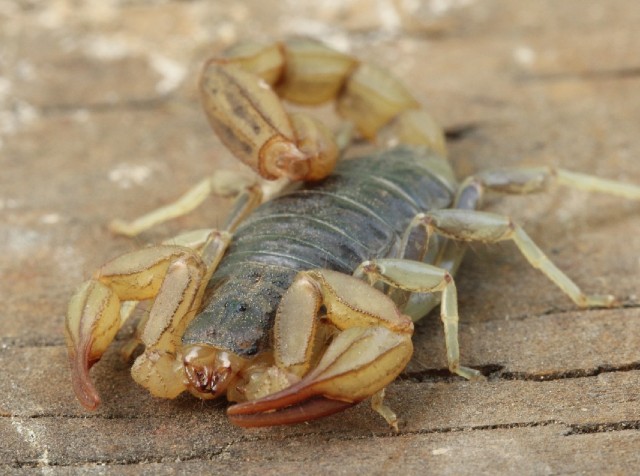While looking for cool creatures in a creek in Columbiana County, Ohio, I managed to catch a couple of these large minnows.
The River Chub is robust, olive in color above and dusky yellow below. It has orange-red fins and large scales. During the breeding season, mature males develop pinkish-purple coloration and swollen heads with tubercles between the eyes and snout tip – they are sometimes called “Hornyheads.”
This fish is found in clear, medium-to-large creeks and rivers with moderate-to-swift current over rock and gravel substrate. Its range extends primarily through most of the Great Lakes and Appalachian regions.
The River Chub’s presence in a stream is a good indicator of water quality. It is intolerant of pollution, turbidity and siltation and requires a minimum pH 6.0. This fish lives up to 5 years in age and can grow to be a foot long,
It spawns in April and May. The males select sites with gravel substrate in riffles often adjacent to or just behind a large boulder. At these sites, males build a mound by stacking up a pile of pebbles with their mouths. They spawn above the pile of pebbles and continue to add to the mound between spawning events.
As spawning continues, this activity creates a round pile of pebbles that can be 2-3 feet across and 8-12 inches high. Many other smaller species of fish will sneak in and spawn in the nest of the River Chub, taking advantage of the way the male aggressively defends the nest, which insures their eggs are protected as well.


